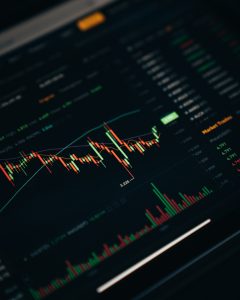6 Commodities ETFs To Buy
These commodities ETFs can help investors get involved in a useful asset class
As an asset class, commodities are frequently overlooked compared to stocks and bonds. Typically, financial advisors and planners will recommend that investors allocate between 5% and 10% of their portfolios to commodities. Rarely do the recommended allocations to commodities exceed 10%.
Like any other asset class, commodities have advantages and drawbacks. Unlike dividend stocks or bonds, there are no coupons, dividends or interest payments associated with commodities. That is true of direct ownership of a commodity like gold or silver and true of many commodities ETFs. That means investors are dependent on capital appreciation.
On the other hand, there are advantages with commodities and commodities ETFs. The asset class provides diversification within portfolios and can be an excellent way to hedge against inflation.
“Commodity returns usually have low or negative correlations with the returns of other major asset classes. So often, when bonds and stocks fall, commodities rise,” according to Kotak Commodities. “Sometimes, there may not be any connection between the returns at all. Factors that affect returns on stocks and bonds, for example, do not affect returns on commodities in the same manner.”
For investors looking for correlation, diversification and inflation benefits, here are some commodities ETFs to consider.
Commodities ETFs to Buy: SPDR Gold MiniShares Trust (GLDM)
Expense Ratio: 0.18% per year, or $18 on a $10,000 investment.
Typically, commodities ETFs carry higher fees than their equity and fixed-income counterparts, but issuers are lowering fees on commodities products. In fact, there are some downright cheap ETFs residing in the gold space. The SPDR Gold MiniShares Trust (NYSEARCA:GLDM) is a prime example of an inexpensive commodities ETF.
For investors new to commodities ETFs, gold is an excellent place to start because the yellow metal is one of the most heavily traded and watched commodities in the world. It has been a store of value for thousands of years and is one of the primary vehicles used by investors to hedge against inflation and take advantage of low interest rates. Plus, GLDM is cost-effective.
“The payment of GLDM’s ongoing expenses will be lower than the costs associated with buying and selling gold bullion and storing and insuring gold bullion in a traditional allocated gold bullion account,” according to State Street.
Global X Gold Explorers ETF (GOEX)
Expense Ratio: 0.65%.
Many commodities ETFs either represent ownership of a physical asset, such as the aforementioned GLDM, or are futures-based strategies. However, plenty of commodities ETFs are also equity plays and one of the most fertile territories for equity-based commodities funds is in the gold miners arena.
The Global X Gold Explorers ETF (NYSEARCA:GOEX) is unique relative to rival gold miners ETFs in that GOEX is dedicated to gold exploration firms, which are involved in the earliest stages of the gold mining process.
“Often, explorers may have the rights to only a handful of projects,” according to Global X research. “Once gold has been discovered, explorers can elect to engage in M&A activity with a mining company or undergo the mining phase themselves. These companies’ economic success are often tied to their ability to successfully find economically feasible gold ores as well as changing prices in gold. Companies that explore are sometimes equated with venture capital in that investments in gold exploration companies are early stage, high risk, with high potential reward.”
SPDR S&P North American Natural Resources ETF (NANR)
Expense Ratio: 0.35%.
Another equity-based commodities ETF, the SPDR S&P North American Natural Resources ETF (NYSEARCA:NANR), tracks the S&P BMI North American Natural Resources Index and provides exposure to a variety of commodities producers.
“At each quarterly Index rebalancing, the combined weight of securities of companies in the energy, metals & mining and agriculture categories are set at 45%, 35% and 20%, respectively,” according to State Street.
The energy and materials sectors combine for nearly 93% of NANR’s weight and because this is a cap-weighted fund, investors get significant exposure to some of the largest domestic energy companies. Chevron (NYSE:CVX) and Exxon Mobil (NYSEARCA:XOM), the two largest U.S. oil companies, combine for nearly 21% of NANR’s weight, so there is some individual securities concentration risk with this commodities ETF.
iShares Silver Trust (SLV)
Expense Ratio: 0.5%.
The iShares Silver Trust (NYSEARCA:SLV) is the silver equivalent to the aforementioned GLDM and PALL, meaning this commodities ETF represents ownership of physical silver. SLV is the largest silver trading in the U.S.
Like some of the other precious metals, silver is more volatile than gold. SLV has a three-year standard deviation of 19.79% compared to 11.14% on the iShares Gold Trust (NYSEARCA:IAU). Part of that volatility is attributable to the industrial demand component with silver.
“In addition to a recovery in physical investment, silver industrial demand is also expected to continue growing for the fifth consecutive year, which will offset gains in mine supply,” according to Metals Focus.
Invesco DB Commodity Index Tracking Fund (DBC)
Expense Ratio: 0.89%.
The Invesco DB Commodity Index Tracking Fund (NYSEARCA:DBC) is a commodities ETF for a more advanced commodities investor. That is the case not because DBC is a complex fund (it is not), but rather because DBC goes beyond commodities basics, such as gold, oil and silver.
“The Fund is designed for investors who want a cost-effective and convenient way to invest in commodity futures,” according to Invesco. “The Index is a rules-based index composed of futures contracts on 14 of the most heavily traded and important physical commodities in the world.”
Of the 14 commodities in DBC’s lineup, five are energy commodities, five are metals and four are agriculture commodities. While DBC’s roster can sprawl into the some volatile corners of the commodities universe, the commodities ETF’s long-term volatility compares favorably with some single-commodities funds, including the benchmark oil and silver ETFs.
VanEck Vectors Agribusiness ETF (MOO)
Expense Ratio: 0.54%.
Speaking of agriculture commodities, the VanEck Vectors Agribusiness ETF (NYSEARCA:MOO) is a sound avenue for investors looking to play that part of the commodities landscape without having to use volatile futures.
While Deere & Co. (NYSE:DE) is MOO’s largest holding at a weight of 8.5%, the fund is more than just a way of playing farm machinery companies. Consumer staples companies represent almost 34% of the fund’s weight while the materials and industrial sectors combine for just over 48% of MOO’s roster. Overall, the $754.20 million MOO holds 57 stocks from more than 20 countries.
The issue with MOO is if and when it will outperform the S&P 500. Over the past three years, MOO has been a better bet than a traditional materials ETF, but this commodities ETF has lagged the S&P 500 by 800 basis points over that period.
As of this writing, Todd Shriber owns shares of IAU.
See Also From InvestorPlace:
- 7 ETFs to Buy for Serious Diversification
- 7 Breakout Stocks to Watch in 2019
- The 8 Best Stocks to Buy for an April Rally
Category: Commodity ETFs





